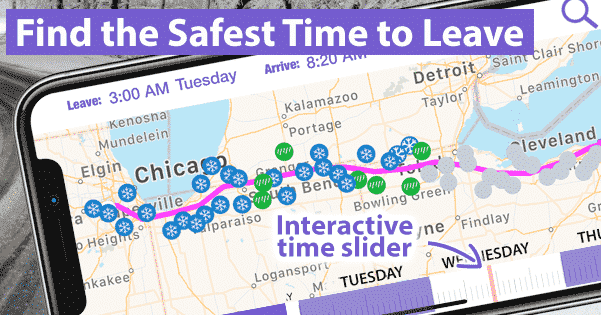RV HANDLING IN HIGH WINDS

Many consider an RV to be a home away from home. Owning an RV allows people to travel to various places comfortably surrounded by their own homey belongings. RVs are also large vehicles. Due to the size and height, RVs are more difficult to handle in high winds than the average size vehicle. Therefore, high winds can significantly affect the way your RV handles.
On windy days, the height of an RV acts similar to a sail on a sailboat. Like a sail catching the wind an RV can be rocked back-and-forth and even pushed into other lanes. In some cases, RVs can be blown over and flip when traveling in high wind conditions.
Prior to departing on a trip, you will want to gain some experience driving some type of RV. If you are unable to practice, be sure to log some mileage in low wind conditions to get a feel for the handling of an RV.
Regardless of your experience level, anyone from a novice to a highly experienced driver will benefit from using these following safety tips.
Safety Tips for Handling an RV in High Winds:
- Keep both hands on the wheel. Even when everything is going smoothly a sudden gust of high wind can cause you to panic and send your RV reeling.
- Keep your speed slower than normal. The faster your RV is traveling the more difficult it will be to keep it under control in high wind conditions.
- Reduce your speed when you travel from an area that is shielding the wind to one that is less protected. For example, if you are traveling through an area with trees lining both sides of the road and then approach an open field, slowing down will help you maintain control of the RV when suddenly hit by the force of a high crosswind.
- Stay alert to all the other traffic around you. Other RVs and those big rigs are just as affected by high wind conditions as your RV.
- Take more frequent breaks. Whether you are driving a few miles away from home or are planning a trip that will take several days, driving in high winds will cause tension to build up in your body. Take frequent breaks and relax for 10 or 15 minutes every hour or so. Pull into a rest area and stretch your legs. Work the tense muscles in your neck and shoulders can make it easier to handle your RV in those windy conditions.
- If wind conditions are too extreme, pull over and wait until the wind conditions calm down before starting on your way. It is better to shorten your trip then to take risks that will keep you from arriving safely.
If you do a lot of traveling in your RV, you will want to invest in the Drive Weather app. This app will tell you what the weather conditions are going to be at every point along your route. In addition, you can use the time slider at the bottom of the app to see how to avoid dangerous winds by simply changing your departure time.






